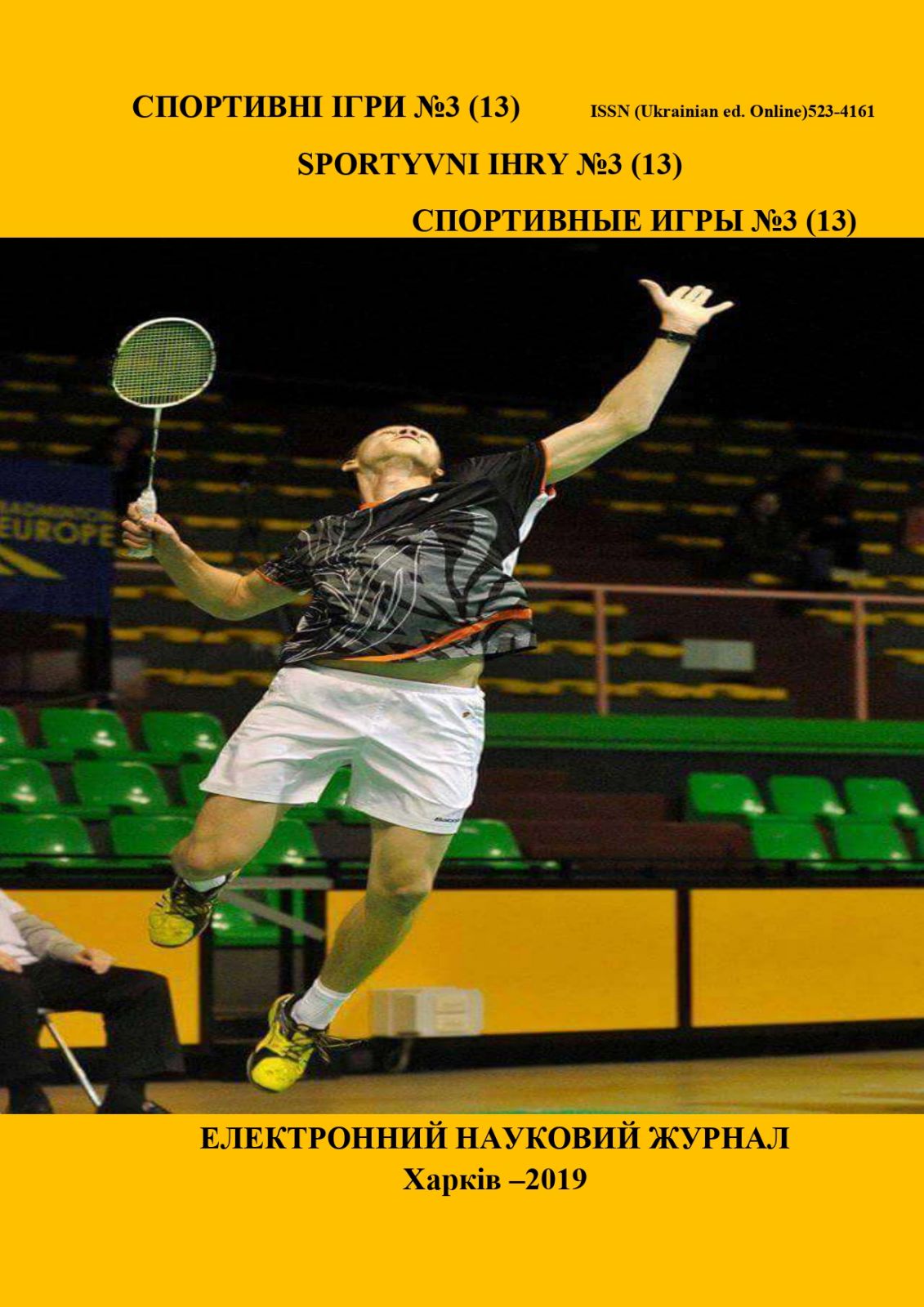The level of ability to reproduce specified amplitudes of movements and time intervals in students specializing in sports
DOI:
https://doi.org/10.15391/si.2019-3.04Keywords:
games, sense of time, reproduction, angles, amplitudeAbstract
The purpose of the
study is to determine the ability to reproduce specified time intervals and amplitudes of movements
by students who specializing in sports games depending on the gender of the athletes. Material and
methods of research. The study involved athletes at the age of 17-18 years who are engaged in
sports games at the level of amateur sports. The number of athletes who participated in the study
was 40 people, among them 20 boys and 20 girls. Analysis of scientific and methodological sources
allowed to establish the level of knowledge of the problem. Pedagogical testing consisted of a study
of the ability of athletes to reproduce specified amplitudes of movements and time intervals. For the
analysis of the information obtained, the Microsoft Excel software package was used, the accuracy
of the differences was established on the basis of the calculation of the Student's criterion, with
p˂0.05. Results. When reproducing certain amplitudes of movement in the elbow joint, in 20% of
cases, the young men performed the tasks exactly without errors, in 36.67% of cases they increased
a certain angle and in 43.33% of cases they reduced it. Girls more often were mistaken in the
direction of increasing the required angle of reproduction - in 64.17% of cases, less were wrong in
reducing the required angle - 15% of cases, and almost the same with the guys performed tasks
correctly - 20.8% of cases. Investigating the ability of athletes to reproduce certain periods of time,
it was found that young men, on average, by 8.6% make mistakes when reproducing a time interval
of 5 s and 14.4% when reproducing a time interval of 15 s. Girls make mistakes in reproducing
small intervals of time by 7.4%, when reproducing longer (15 s) intervals by 13.5%. Findings. It
has been established that the ability of male students who specialized in sport games to reproduce
small amplitudes of the working (right) hand is significantly higher (p˂0.05). There was no
significant difference between the results of the test by boys and girls, for small, medium and large
angles of reproducing (p˃0.05). The absence of reliability in the differences between the indicators
of boys and girls in the reproduction of small (5 s) and longer (15 s) time intervals (p ˃0.05) was
established. However, it is necessary to point out, the reliably greater accuracy of sensations over
short periods of time than longer (p˂0.05) for boys and girls.
References
Бойчук, Р. І. (2009). Координаційні здібності юних волейболісток та методика їх розвитку на етапі початкової підготовки. Молода спортивна наука України. 1, 42-47.
Бойчук, Р. І. (2012). Розвиток координаційних здібностей юних волейболісток на етапі початкової підготовки. (Doctoral dissertation). Київ, Україна.
Дудін, М. П. & Кропивницька, Т. А. (2005). Модельні характеристики просторово-часової точності гандболістів віком 15-18 років. Олімпійський спорт і спорт для всіх: ІХ Міжнар.наук.конгрес, 20-23 вересня 2005 р. тези доп.
Корягина, Ю. В. (2006). Восприятие времени и пространства в спортивной деятельности. Москва : Теория и практика физической культуры и спорта.
Моісеєнко, О. К. & Ширяєва, І. В. (2016). Теоретичні та методологічні особливості розвитку координаційних здібностей юних баскетболістів. XVІ Міжнародна науково-практична конференція: Фізична культура, спорт та здоров’я. 158-162.
Несен, О. О., & Червона, С. П. (2018). Гандбол. Теорія та методика. Харків: ХДАФК.
Несен, О. О., Помещикова, І. П., Червона, С. П. & Пащенко, Н. О. (2017). Зміни фізичної підготовленості гандболісток 9–10 років під впливом участі у збільшеній кількості змагань протягом року. Слобожанський науково-спортивний вісник. 6, 64-68. doi:10.15391/snsv.2017-6.01
Несен, О. О., Пащенко, Н. О. & Марченко, К. О. (2018). Показники ігрової діяльності у баскетболі 3х3. Спортивні ігри, 3(9), 58–65. https://doi.org/10.5281/zenodo.1254042.
Поліщук, Л. В. (2005). Комплексна оцінка просторово-часових параметрів рухів тенісистів високої кваліфікації. (Doctoral dissertation). Київ, Україна.
Помещикова, І. П., Євтушенко, А. В. & Євтушенко І. М. (2012). Рівень просторової орієнтації баскетболісток 14 років. Педагогіка, психологія та медико-біологічні проблеми фізичного виховання і спорту. 3, 106-109.
Романенко, В. А. (2005). Диагностика двигательных способностей. Донецк: ДонНУ.
Irina Pomeshchikova, Larysa Ruban, Оlena Nesen, Maksуm Mishyn, Irina Shaposhnykova, Svitlana Korsun, Natalia Boychenko & Vladimir Perevoznyk (2018). Influence of peripheral vision indicators on the efficiency of 15-year-old basketball players’ game actions. Sport Science. Іnternational scientific journal of kinesiology. 75-82.













